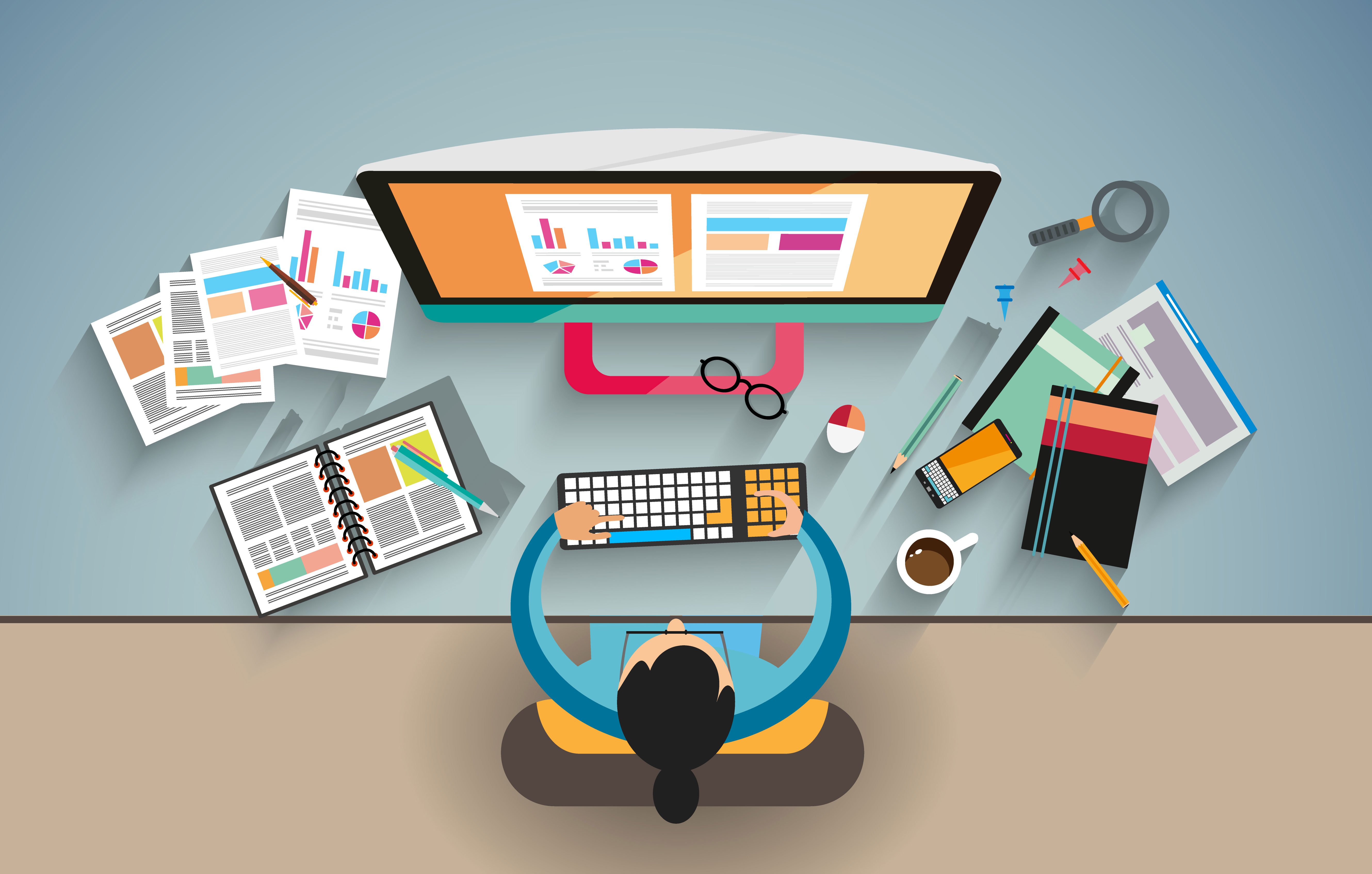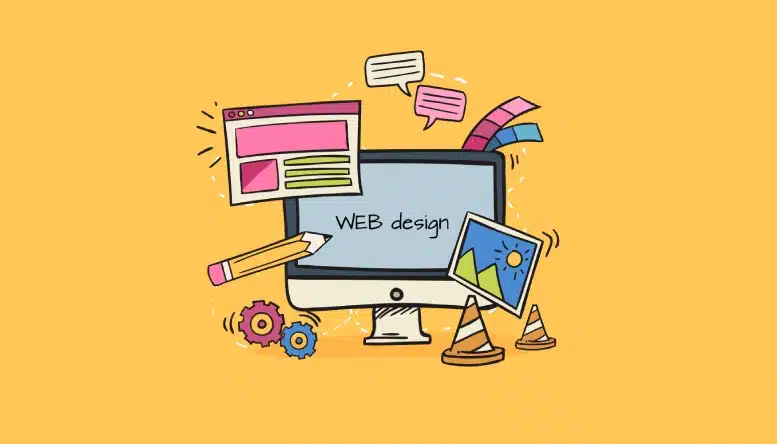The Most Effective Sorts Of Website Design to Boost Individual Experience and Involvement
In the ever-evolving landscape of electronic communication, the performance of Web layout significantly influences customer experience and involvement. Various layout techniques, such as minimalist, responsive, and interactive formats, each offer one-of-a-kind advantages that can provide to varied customer demands.
Minimal Web Design
As electronic landscapes come to be progressively messy, minimal website design has become a powerful strategy to boosting individual experience. This layout approach prioritizes simplicity, concentrating on vital aspects while removing unnecessary interruptions. By utilizing sufficient white space, straightforward navigation, and a minimal shade combination, minimalist design cultivates quality and guides individual attention to key web content.
The core concept of minimalist website design is to create a smooth interaction for users. By lowering cognitive tons, individuals can swiftly realize details without really feeling bewildered. This direct method not only improves usability yet additionally motivates interaction, as visitors are most likely to explore a site that is aesthetically enticing and simple to navigate.
In addition, minimalist layout usually highlights typography and imagery, using these elements tactically to convey messages properly. This concentrate on crucial elements can boost brand identification and create a remarkable user experience. Essentially, minimalist Web layout is not just a fad; it is a thoughtful approach that identifies the value of user-centered style. By removing peripheral aspects, developers can create a much more interesting, reliable, and pleasurable Web experience for all customers.
Responsive Web Design
In today's diverse digital atmosphere, receptive website design has actually become necessary for developing a seamless user experience across a wide range of gadgets. As customers accessibility internet sites on smartphones, laptop computers, desktop computers, and tablet computers, the capacity of an internet site to adjust its layout and content to different display dimensions and resolutions is critical.
Receptive Web style uses versatile grids, pictures, and CSS media inquiries to guarantee that Web content exists optimally, no matter of the tool made use of. This strategy not just improves the visual allure of an internet site yet additionally dramatically boosts use. Individuals are most likely to engage with a site that offers a regular experience, as it gets rid of the irritation of having to zoom in or scroll excessively.
Moreover, online search engine, including Google, prioritize mobile-friendly websites in search positions. By embracing responsive layout, services can improve their presence and reach a broader target market. This technique additionally streamlines website upkeep, as a single variation of the site can accommodate all gadgets, reducing the demand for several variations. In recap, receptive website design is a basic method that boosts individual experience, involvement, and general satisfaction.
Interactive Web Design
Receptive website design prepares for boosting customer experience, yet interactive Web layout takes this a step additionally by involving users in a much more vibrant means - Aligned Position Web Design. By incorporating aspects such as computer animations, clickable models, and real-time feedback, interactive website design astounds customers, drawing them into a richer browsing experience
This technique not just fosters interaction however additionally encourages users to discover material actively as opposed to passively consuming it. Strategies such as gamification, where users gain rewards for finishing tasks, can substantially boost the moment invested on a website and boost total fulfillment. Interactive functions can streamline complicated info, making it a lot more digestible and pleasurable.

Including interactive design components can also cause higher conversion prices, as individuals are most likely to engage with a website that actively includes them. Aligned Position Web Design. Eventually, interactive website design transforms individual experiences right into memorable journeys, making certain that visitors return time after time
Apartment Layout
Identified by its minimalistic approach, flat design highlights simplicity and performance, removing away unneeded components and concentrating description on essential features. This design viewpoint prioritizes usability, guaranteeing that individuals can navigate interfaces easily and effectiveness. By using a clean visual, level layout removes the mess usually located in extra luxuriant designs, consequently improving individual concentrate on content and functionality.
The hallmark of level layout hinges on its use strong colors, simple typography, and geometric forms. These components add to a visually appealing interface that is both modern-day and friendly. In addition, level style fosters a sense of quality, enabling users to discern crucial activities and info without interruption.
Additionally, level design is especially reliable in responsive Web style, as its simpleness translates well throughout numerous devices and screen dimensions. By concentrating on important functions, level design not only fulfills customer needs however additionally urges seamless interaction, making it a crucial part of effective Web style methods.
Flexible Website Design
Adaptive website design personalizes the customer experience by creating several taken care of formats customized to various display sizes and devices. Unlike responsive style, which fluidly changes a solitary format, adaptive style utilizes unique designs for details breakpoints, guaranteeing optimal presentation on different platforms. This technique enables designers to concentrate on the special attributes of each tool, boosting use by supplying specifically what customers require based upon their context.
One of the main advantages of adaptive website design is its capacity to maximize tons times and performance. By serving tailored content and photos that fit the customer's device, internet sites can minimize information use and resource enhance loading speeds. This is especially useful for users with slower connections or minimal information plans.

Additionally, flexible design assists in a more consistent and regulated branding experience. Since designers develop multiple designs, they can make certain that the visual aspects straighten with the brand's identity throughout different platforms - Aligned Position Web Design. This leads to a natural user experience, improving interaction and advertising user retention
Final Thought
Finally, the integration of minimalist, responsive, and interactive website design principles substantially boosts customer experience and engagement. Minimalist style promotes quality and emphasis, while receptive design guarantees versatility throughout numerous tools, advertising accessibility. Interactive design captivates individuals with dynamic aspects, motivating expedition and customization. Jointly, these style comes close to add to the production of straightforward settings that not just boost satisfaction but also drive greater conversion prices, emphasizing their essential importance in modern Web layout methods.

Minimal layout fosters clarity and focus, while responsive design guarantees versatility throughout numerous tools, advertising access. Jointly, these layout comes close to contribute to the development of easy to use atmospheres that not only enhance fulfillment however likewise drive higher conversion rates, underscoring their vital significance in contemporary Web design strategies.